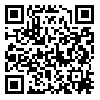BibTeX | RIS | EndNote | Medlars | ProCite | Reference Manager | RefWorks
Send citation to:
URL: http://aoh.ssu.ac.ir/article-1-210-en.html
2- Associate professor, Department of Occupational Health Engineering, School of Public Health, Tehran University of Medical Sciences, Tehran, Iran ,
Background: The occurrence of fire and explosion accidents in the process industries is accompanied by the gradual release of large amounts of energy. The DOW Index is one of the methods of evaluating fire and explosion in the process industries. The present study used the fuzzy logic method to improve the results of the fire and explosion risk analysis method and reduce their uncertainty (error in achieving the correct result). Methods: In the present cross-sectional study, having analyzed the gas separation process, the DOW index was applied to study high-risk equipment. Then, to optimize the behavior of the parameters affecting the DOW index, each weight parameter was assigned to between 0 and 1, and the membership functions of each degree of risk were determined based on the fuzzy rules classification system. The five selected linguistic variables based on membership functions were used to assess the risk level. Results: Considering butane, the level of fire and explosion risk was 231.3, which was less risky than the fuzzy logic result of 248.6. Methane risk was calculated according to the fire and explosion index of 262.1 while using fuzzy logic that was 265.6. The lowest risk difference was observed between the two methods for ethane (258.9 conventional method and 259.1 fuzzy method results). The risk level calculated by DOW for propane was 243.6, and the risk level was 255.1 while using fuzzy logic. Conclusion: Although both methods yielded a high degree of risk, fuzzy logic results indicated higher numerical values comparing to the conventional DOW method. Compared to the conventional DOW method, fuzzy logic results are closer to reality with higher confidence levels.
Received: 2019/11/5 | Accepted: 2020/07/10 | Published: 2020/07/10
| Rights and permissions | |
 |
This work is licensed under a Creative Commons Attribution-NonCommercial 4.0 International License. |







